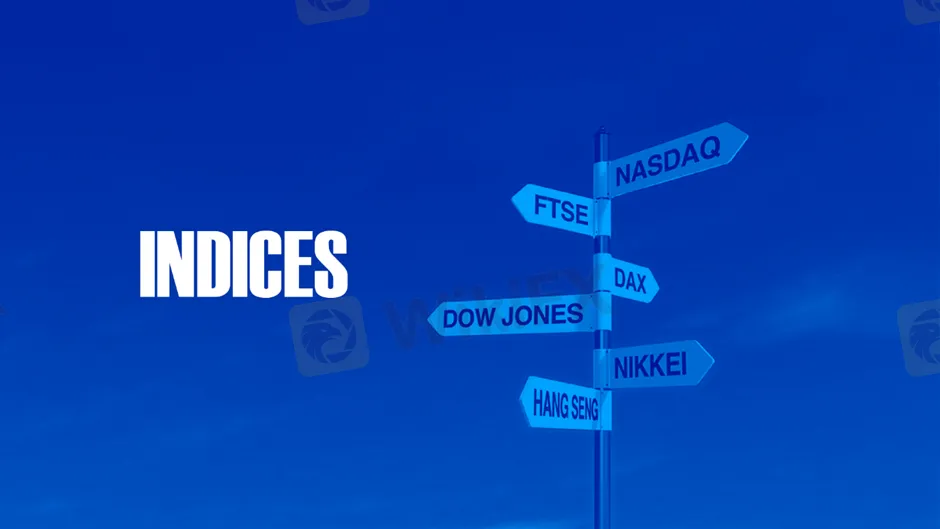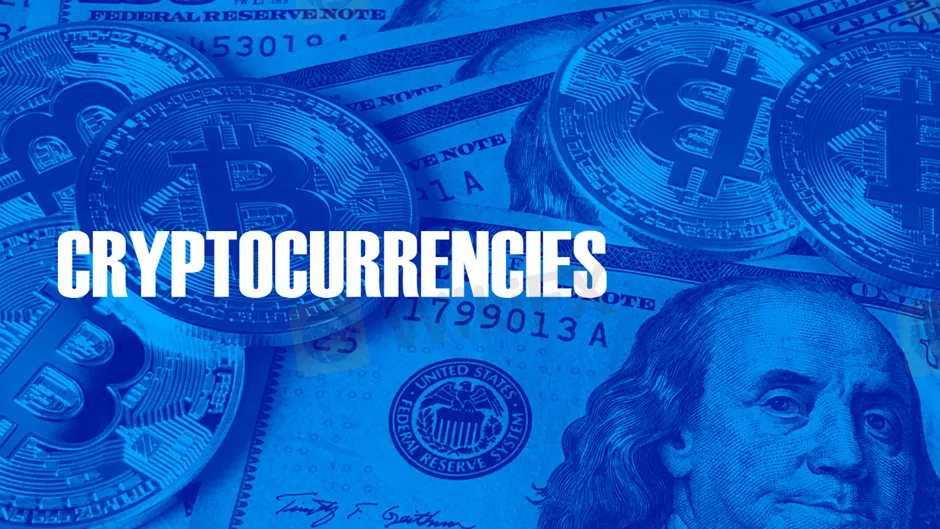Weekly News 2022/08/01-2022/08/05
Abstract:Index / Stocks / Crypto / Metals / Commodity & Futures / Forex

U.S. stocks closed mixed on Friday, with the Dow up 76.65 points/0.23% to 32803.47. Nasdaq down 63.03 points/0.50% to 12657.55. S&P 500 down 6.75 points/0.16% to 4145.19. The Dow fell 0.13% this week, but both the Nasdaq and the S&P 500 recorded gains. The S&P 500 rose 0.36% and the Nasdaq rose 2.15%. The U.S. non-farm payrolls data for July far exceeded expectations, reinforcing market expectations that the Federal Reserve will insist on aggressive interest rate hikes to curb inflation. Markets are pricing in a nearly 70 percent chance of another 75 basis point rate hike at the Fed's next meeting.
On the data side, data released by the U.S. Bureau of Labor Statistics on Friday showed that the number of nonfarm payrolls in the United States increased by 528,000 in July, the largest increase since February this year, better than market expectations for an increase of 250,000. In addition, data released on the same day also showed that the US unemployment rate fell to 3.5% in July.
Market analysis believes that the U.S. non-farm payrolls data in July indicate that the U.S. labor market was relatively strong, easing concerns about a recession, and this also increased posobility the Federal Reserves sharp rising interest rate in September.
Economists Thomas Simons and Aneta Markowska said labor data suggested the Fed could raise rates by 75 basis points at its September meeting, but next week's consumer price index will indicate whether that is a possibility or the Fed will stick to 50 rate hikes basis point.

Tesla's (NASDAQ: TSLA) shareholder meeting approved a stock split plan, splitting one share into three shares. Tesla's shareholder meeting on Thursday approved a three-for-one stock split. In June, Teslas annual proxy statement filed with the Securities and Exchange Commission (SEC) revealed that the company planned a 3-for-1 stock split. Tesla said the stock split plan would provide employees with greater flexibility in managing their equity and would also make it easier for retail investors to acquire shares.
American food delivery platform DoorDash (NYSE: DASH) Q2 revenue exceeded expectations, and GOV increased by 25% year-on-year. According to the financial report data, DoorDash's second-quarter revenue increased by 30% to $1.6 billion, higher than the average analyst expectation of $1.52 billion; adjusted EBITDA was $103 million, far exceeding analysts' expectations of $55.1 million. Despite rising inflation, consumer appetite for takeaways hasn't waned significantly. DoorDash VP Ravi Inukonda said it hasn't seen a hit to consumer spending on the platform, as the record number of users has led to a healthy order frequency.
According to multiple foreign media reports, Pfizer (NYSE: PFE) is in advanced talks to acquire Global Blood Therapeutics Inc. (NASDAQ: GBT). Pfizer plans to spend about $5 billion in the merger, to diversify the companys business and rely on other products for long-term sales growth in the post-pandemic era.
Technology giant Amazon (NASDAQ:AMZN) announced the acquisition of iRobot (NASDAQ: IRBT), the leader in sweeping robots, for a total transaction price of $1.7 billion after calculating the company's net debt. The deal, which will be all-cash, is the fourth largest in Amazon's history.

Bitcoin (BTC) price is now near $23,000, up 2% on average volume on Friday. Currently near $23,000, the largest cryptocurrency by market cap is on track to close the week down 2%. BTC price action follows a surprisingly strong U.S. jobs report.
While Coinbase on Thursday announced a partnership with BlackRock to allow clients of the world's largest money manager to trade and hold bitcoin directly on its Aladdin software, the digital currency's price hasn't changed.
Bitcoin is currently only trading around $23,000 and is still consolidating on shorter time frames. Prices have been less volatile this week, staying close to the $22,600 support level. The main resistance that Bitcoin needs to break to turn bullish again is $24,200. This area has been a strong resistance and selling pressure is also high around this mark.

Spot gold was nearly flat this week, not far from last week's closing price of $1,765.63 an ounce. Although recession worries are good for gold prices, the U.S. job market has increased instead of falling. The total number of non-farm payrolls and the unemployment rate have returned to the levels in February 2020 (before the Covid outbreak), causing gold prices to give up most of the gains this week. The market had to reassess the Fed's response to such a strong labour market. The U.S. non-farm payroll population increased by 528,000 in July, a new high since February this year, an increase far exceeding the expected 250,000.
However, recession fears still exist. The Fed has raised interest rates four times in a row since March this year, and the last two consecutive hikes by 75 basis points, for a total of 225 basis points. However, with the June CPI hitting a red-hot 9.1%, the June PCE reported last Friday was still high at 6.8%, up from 6.3 in May, and inflation didn't get any better. Relief, the effect of interest rate hikes is worrying. If the U.S. economy turns stagnant, there is no doubt that gold prices will continue to gain momentum.
Mike McGlone, the senior commodities strategist at Bloomberg Intelligence, said: “Gold appears more likely to resume its long-lasting upward trajectory, breaking resistance around $2,000 an ounce than sustaining support below $1,700. It is only a matter of time before the rate hikes recede on the upside path of least resistance.”
Fears of a global recession and the latest geopolitical developments supported gold prices.

International oil prices tumbled nearly 10%, hitting a record low since February. Soaring inflation and rising interest rates have sparked fears of a recession. A global manufacturing slump has dimmed the outlook for fuel demand, leaving the Organization of the Petroleum Exporting Countries and its partners (OPEC+). A decision to raise symbolic output for September was made. Analyst Leon Li said: “OPEC+ agreed to increase production by 100,000 barrels per day in September, but the increase was much lower than in previous months, and the global energy market is still facing supply shortages.”
NYMEX crude oil and ICE Brent crude oil hit a new low of $87.55 per barrel this week and a new low of $93.20 since February 25.
U.S. crude stockpiles also unexpectedly surged last week due to falling exports and refinery cuts, while gasoline inventories also unexpectedly rose due to slowing demand, according to the U.S. Energy Information Administration (EIA) inventory data. U.S. motor fuel sales are falling, and gasoline demand remains below the average for the same period over the past few years.
Senior market analyst Edward Moya said in a research report: “The large number of factory activity data proves that the global economy is heading for a major contraction, and oil companies have very good earnings in the earnings season, raising expectations for oil production increases, and crude oil prices plummeted.”

In other currencies, the euro fell slightly against the dollar, and the European Central Bank's focus turned to inflation, but the outlook for the European economy was worrisome. Geopolitical conflicts have always been downward pressure on the euro. Judging from the current situation, there is a high probability that the easing of the conflict between Russia and Ukraine will not see the light of day within this year, and Europe and the United States will continue to promote sanctions against Russia.
The pound fell slightly against the US dollar, and the Bank of England raised interest rates by 50 basis points. Similarly, worries about a British economic recession continued to heat up.
OnePro Special Analyst
Buy or sell or copy trade crypto CFDs atwww.oneproglobal.com
The foregoing is a personal opinion only and does not represent any opinion of OnePro Global, nor is there any guarantee of reliability, accuracy or originality in the foregoing.
Forex and CFD trading may pose a risk to your invested capital.
Before making an investment decision, investors should consider their own circumstances to assess the risks of investment products. If necessary, consult a professional investment advisor.
Read more

Weekly News 2024/02/26-2024/03/01
Index / Stocks / Crypto / Metals / Commodity & Futures / Forex

Weekly News 2024/02/19-2024/02/23
Index / Stocks / Crypto / Metals / Commodity & Futures / Forex

Weekly News 2024/02/12-2024/02/16
Index / Stocks / Crypto / Metals / Commodity & Futures / Forex

Weekly News 2024/02/05-2024/02/09
Index / Stocks / Crypto / Metals / Commodity & Futures / Forex
WikiFX Broker
Latest News
Spring Rally in Chinese Equities Signals Potential Lift for AUS and NZD
China’s Export Resilience: A Structural Pivot Towards the 'Global South'
Silver Smashes $70: Is the "Forced Central Bank Buying" Thesis Playing Out?
Biggest 2025 FX surprise: USD/JPY
NFA Charges Japan’s Forex Wizard and Mitsuaki Kataoka With Delaying Withdrawal Requests
Why Your Entries Are Always Late (And How to Fix It)
【WikiEXPO Global Expert Interviews】Robert Hahm: From Asset Management to AI Innovation
Treasury vs. Fed: Bessent leads Trump's Campaign to Reshape US Monetary Policy
Ceasefire on the Brink: 14 Nations Condemn Israel as Geopolitical Risk Premiums Rise
Ringgit hits five-year high against US dollar in holiday trade
Rate Calc


